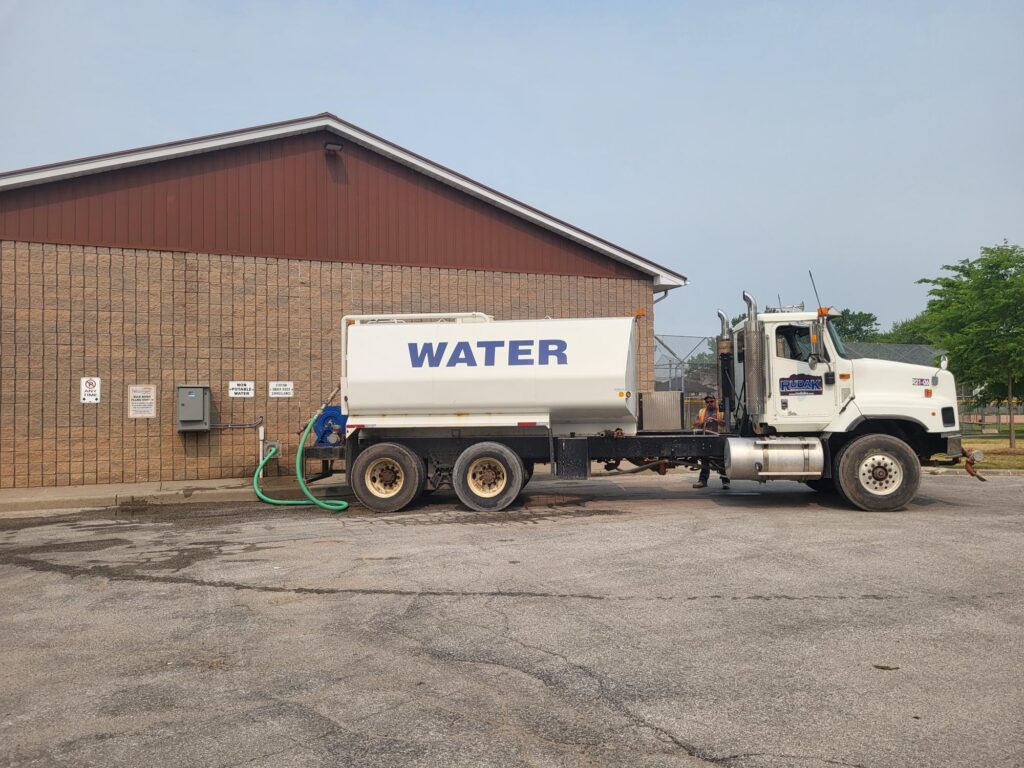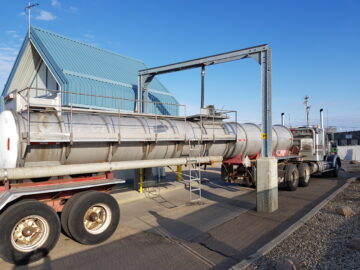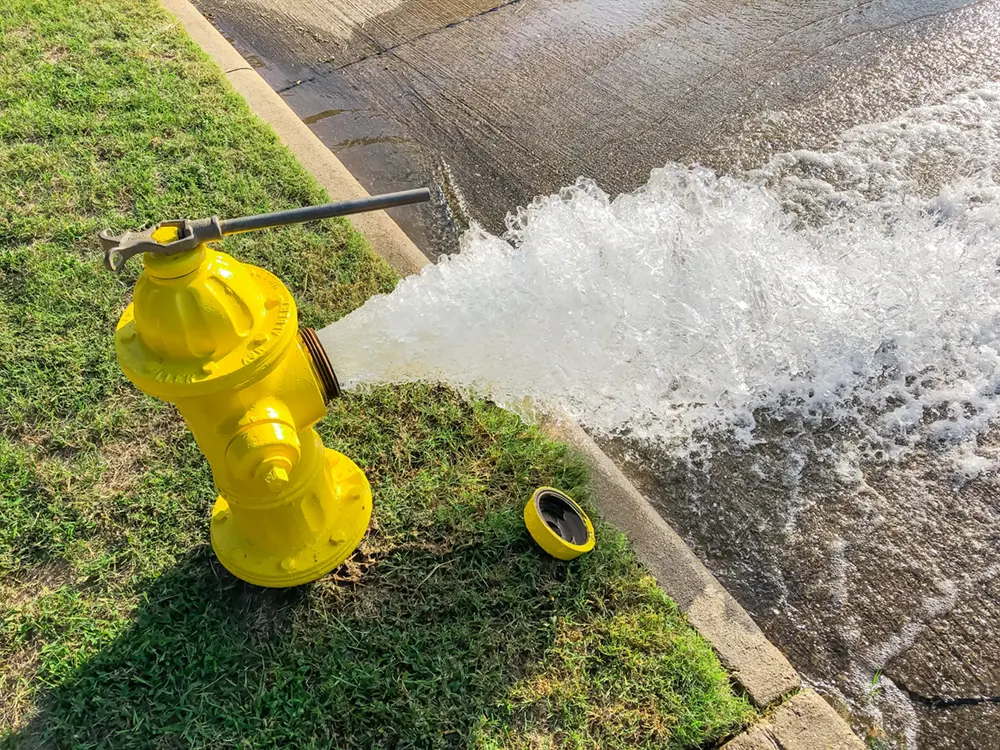Demand for water is rising while supplies may be becoming more variable with drought and heat, especially in the South. Many aquifers are stressed. Reclaimed water gives municipalities a practical way to add reliable capacity without chasing new raw supplies, turning treated effluent into a controlled municipal resource.
Done right, it can relieve discharge-permit pressure while preserving potable supplies for people — all with account-based access, signed usage agreements and audit-ready reporting.
But it’s not right for all municipalities.
In this article, we cover:
- Types of reclaimed water
- Potential wins from using reclaimed water
- When to consider reclaimed water
- When to steer clear
- Why climate matters – storage, seasonality and cold-weather operations
- Overview of the roadmap to a reclaimed water program
- Checklist: What success looks like
- Are you considering a reclaimed water program?
Ready to turn on the tap? Contact Flowpoint.
Or read on to learn the opportunities, pitfalls and regulatory considerations for reclaimed water.
Types of Reclaimed Water

Though common applications include non-food-contact irrigation, industrial cooling, and process water. Further, there are construction uses like concrete mixing, dust control, and selected urban use. You can be sure that there an infinite number of uses we can expect with reclaimed water applications.
In the United States, detailed end-use specifications are determined by the states in compliance with the Safe Drinking Water Act and the Clean Water Act. In the same way Canadian provinces set end-use requirements as well, with British Columbia offering one of the clearest exposure-based models. We recommend that you confirm end-use allowances for your region with the EPA REUSExplorer (U.S.) or B.C.’s Reclaimed Water Guideline (Canada).
There are two dimensions to get right: Where the water comes from and what you use it for.
- Sources. Presently, sources are treated municipal wastewater for reclaimed applications and storm retention ponds for re-use applications. In some jurisdictions, certain industrial or stormwater streams may be allowed when treatment meets the standard.
- End use. Canada and the U.S. classify these differently. Generally, end uses are classified based on their exposure potential. Higher exposure uses require higher treatment and tighter monitoring, as well as stricter access control. Lower exposure uses still require approvals and traceability, but with a lower risk profile.
Across end-use categories, the common thread is control. For example Flowpoint provides this via account-based authorization with precise record-keeping.
Categories of end use:
| Exposure Potential | Typical end uses (Uses/regulations vary by utility/regulator) |
|---|---|
| Higher exposure uses (public contact likely) | Public-facing irrigation Indoor use for toilet/urinal flushing Decorative fountains Surface cleaning of roads |
| Lower exposure uses (no public contact expected) | Process water for power plants Concrete mixing or other construction uses Industrial spray-downs Dust control |
NOTE: At the present time this guide covers non-potable reclaimed water. For potable reuse (IPR/DPR), see the U.S. EPA overview and technical resources or learn about Wastewater Reuse in British Columbia (ISO Committee Paper, 2023).
Potential wins from using Reclaimed Water

Instead of flowing out of your treatment facility, you can put your reclaimed water to work for you and your municipality.
A reclaimed water program can:
- Conserve potable water for people while serving irrigation, construction and other priority demands.
- Provide some level of drought resilience and operational flexibility.
- Add functional capacity and generate revenue, deferring major expansions.
In addition, upgrading to compact biological polishing can help meet tighter effluent targets, unlocking more reuse options. Learn more about types of wastewater treatment and their potential for reclaimed water use here.
When to consider Reclaimed Water?
Every city, utility, and municipality is unique. What works in one might not work somewhere else.
The following are some situations where reclaimed water might be an asset:
- My municipality is growing, and my plant is permit-constrained. Divert some treated effluent to approved non-potable uses, freeing up capacity and keeping development moving.
- My city has steady non-potable demand. Serve parks, irrigation, dust control, soil compaction, street sweeping and industrial washdowns from secure bulk-fill sites.
- My municipality is willing to build infrastructure for safe storage and winterization. Budget for reclaimed water infrastructure, including seasonal/contingency storage and enclosures to keep service reliable.
- My municipality is eligible for financial incentives. There are a lot of federal and state initiatives that fund reclaimed water programs. A few examples include The U.S. EPA Water Infrastructure Finance and Innovation Act (WIFIA), the USDA Water & Waste Disposal Loan & Grant Program and Canada’s FCM’s Green Municipal Fund.
When to steer clear
In some cases, reclaimed water isn’t the right tool. Programs stumble when public perception, operator bandwidth, source control, or fit-for-purpose treatment aren’t addressed up front.
Below are situations where you might want to pump the brakes on planning a reclaimed water program — at least for now.
- My state/province doesn’t clearly allow the uses I need. Without clear end-use rules and regulations, municipalities can’t set up regulation-compliant approvals, monitoring or inspections.
- My team is not prepared to manage approvals and access control. In both the United States and Canada, where reclaimed water is allowable, it is a regulated resource. POS credit card access bypasses approvals and break traceability. If you need account/PIN access and usage agreements, we can provide such a solution.
- My demand is low, and I lack storage space. If you don’t have anywhere to put it and people don’t want it, reclaimed water is not right for your municipality. However, w can assist you with your storage conundrum here.
Why climate matters — storage, seasonality and cold-weather operations
Cold regions can run reclaimed water programs, but bulk water dispensing, in some cases storage, and operations must be sized and designed for seasonality.
- Plan contingency storage for non-irrigation months.
- Treat frost/snow uses as supplemental.
- Winterize stations (not only heated but also insulated enclosures).
- As a result of implementing yourself a reclaimed bulk water program, you can add continuous online water-quality monitoring at stations serving higher-exposure uses. Monitoring can include disinfectant residual and turbidity. Moreover you can be rest assured that water quality is tracked in real time, with alarms logged for compliance.
Overview of the roadmap to a Reclaimed Water program

Reclaimed water works best when the equipment suits your needs. Flowpoint can design and build your custom solution, ensuring it meets your regulatory requirements as well as allowing you to leverage software and reporting to demonstrate compliance to local regulators.
The following is an overview of the process:
- Confirm what’s allowed. Validate end uses and exposure tiers in your jurisdiction Then map the matching treatment and monitoring requirements as end-use rules vary by state/province. Confirm allowed uses, monitoring and record-retention in the EPA’s REUSExplorer (U.S.) or the B.C. Reclaimed Water Guideline (Canada) and any other applicable state or government regulations.
- Plan demand and storage. Estimate seasonal demand, size contingency/seasonal storage and note any winterization needs for your climate.
- Pick sites and hydraulics. Choose pads near users, verify available pressure and decide whether a booster is needed to keep truck fill times reasonable.
- Plan your access and monitoring. Modern water rules make monitoring and audit trails non-negotiable. Each user signs a usage agreement and is approved for specific use types and stations. The system then records user, use type, volume, date/time, station and destination. Those records are searchable and exportable for audits. For higher-exposure uses, many utilities layer in SCADA and online water-quality parameters.
- Choose your station and rules. Select an engineered-to-order bulk-fill system (ports, enclosure, account access, SCADA/online quality). As well as clear non-potable labeling and purple-pipe conventions to support field compliance.
- Launch, log and improve. Commission and complete any initial compliance sampling, train operators and haulers, and log user/use type/volume/time/station (and destination if required). Then, review and tune quarterly.
In a few moves, you’ll be set up to meter, monitor and enforce every drop.
Checklist: What success looks like
Your final reclaimed water program should deliver:
- Potable offset. Save potable water for where it’s needed.
- Capacity relief. Reduce the need for expensive capacity upgrades.
- Regulatory compliance. Tracking and audit readiness.
- Performance. Both high uptime and fast fill rate.
- Quality control. Monitoring where needed.
- Plan for adoption. Communication, active accounts and training.
- Financial Planning. As a result, you can plan for fee schedules to generate net revenue.
- Seasonal management. Storage, winterization.
With the right design, data and dispensing technology, Flowpoint helps you check every box. As a result this turns your reclaimed water program into a lasting success.
Build it like Austin: Access control, compliance, and capacity
Want to know more about what success looks like?
In Austin, Texas, USA, their reclaimed water program now spans more than 50 miles of “purple pipe” and saves millions of gallons of potable water each year.
Learn how Austin used reclaimed water to address scarcity challenges with secure, accountable access for municipal, commercial, and construction uses.
So, are you considering a reclaimed water program?

If you’re not using reclaimed water, you have an unused resource at your disposal.
Flowpoint’s turnkey bulk water dispensing stations are specifically tailored for reclaimed water. We give you levers that regulators expect:
- Access control by use type.
- Metering.
- Remote monitoring.
- Optional online quality.
- Clean records for audits.
Above all you want your reclaimed water done right. Therefore we offer:
- Experience. We’ve been doing reclaimed water since before it was cool. Flowpoint has 30 years of experience successfully helping engineering firms, municipalities, developers and utilities plan and implement their water and wastewater solutions. Given that we have over a thousand stations all over North America, chances are there’s already one near you.
- Customization. Our systems are factory assembled, fully customizable and designed for easy on-site installation. We can customize configurations, including pipe diameter, PSI, number of fill stations and connection types (quick connect, camlock, etc.).
- Robust traceability. Our bulk water stations and Water+™ Software offer outstanding traceability for regulatory compliance.
- Customer support. We also offer a support helpline to quickly answer all your questions as you roll-out your program.
- Warranty. We offer an industry-leading 5-year station warranty.
It’s important to realize that whoever you use for your reclaimed water, that you’ll be working with them for years to come.
Contact the company with decades of experience. We’ll get your reclaimed water program flowing.


